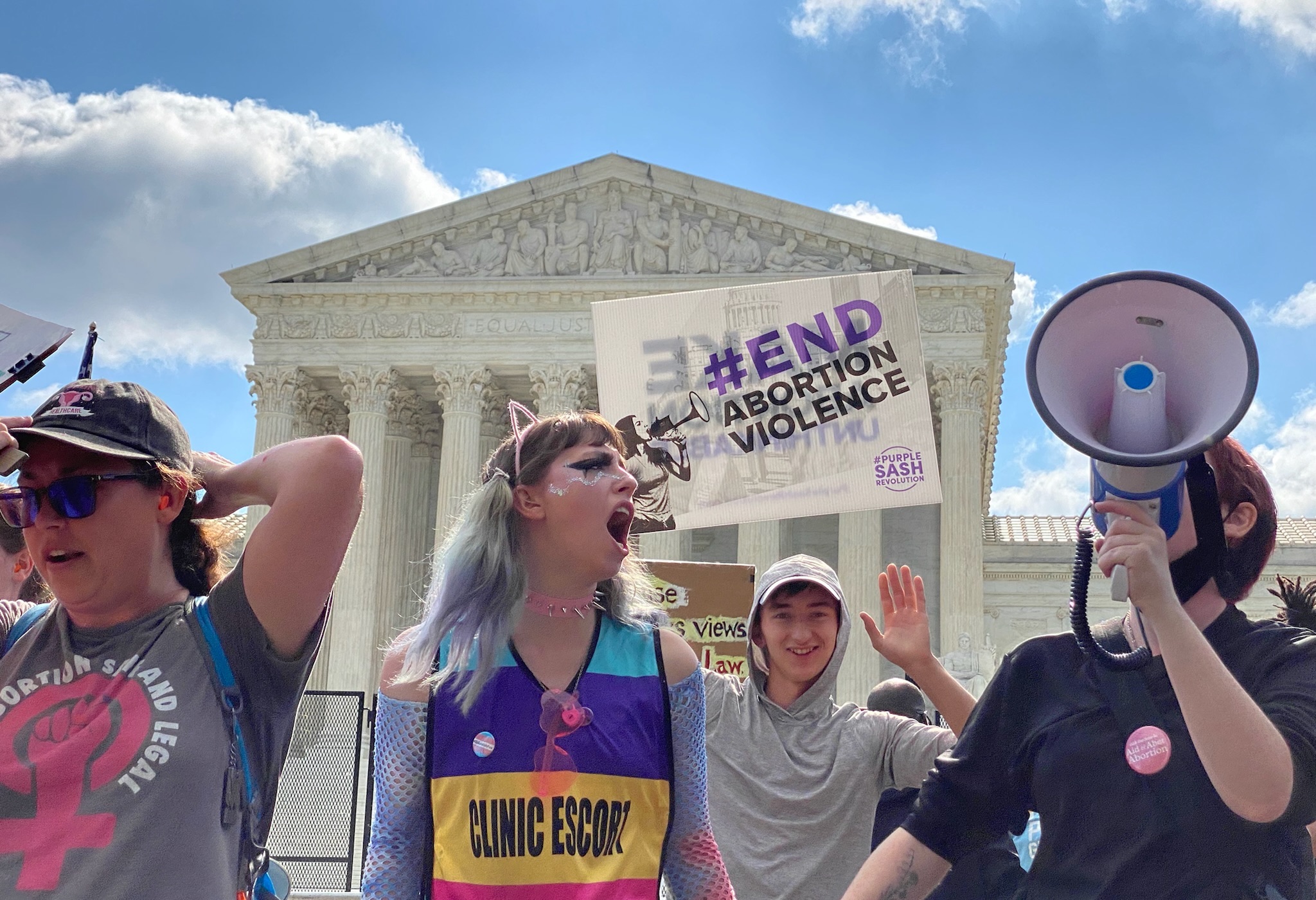[ad_1]
SCOTUS NEWS
on Jun 24, 2022
at 10:13 am

Supporters and opponents of abortion rights protested in front of the Supreme Court on Friday. (Katie Barlow)
This article was updated on June 24 at 11:43 a.m.
The Supreme Court on Friday eliminated the constitutional right to obtain an abortion, casting aside 49 years of precedent that began with Roe v. Wade.
The decision by Justice Samuel Alito will set off a seismic shift in reproductive rights across the United States. It will allow states to ban abortion, and experts expect about half the states to do so.
In one of the most anticipated rulings in decades, the court overturned Roe, which first declared a constitutional right to abortion in 1973, and Planned Parenthood v. Casey, which re-affirmed that right in 1992. The decision followed the leak in early May of a draft opinion showing that a majority of the justices were privately poised to take that step. On Friday, they made it official.
The vote to overturn Roe was 5-4. Justices Clarence Thomas, Neil Gorsuch, Brett Kavanaugh, and Amy Coney Barrett joined Alito’s opinion. Chief Justice John Roberts did not join the opinion. He agreed with the majority that the Mississippi abortion restriction at issue in the case should be upheld, but in a separate opinion, he argued that the court should not have overturned Roe.
The court’s three liberals, Justices Stephen Breyer, Sonia Sotomayor, and Elena Kagan, filed a joint dissent.
The decision came in Dobbs v. Jackson Women’s Health Organization, a challenge to a 2018 Mississippi law that bans virtually all abortions after the 15th week of pregnancy. The law carves out exceptions for medical emergencies and cases involving a “severe fetal abnormality” but does not make exceptions for cases involving rape or incest. It never went into effect, however, because the lower courts – including the conservative U.S. Court of Appeals for the 5th Circuit – blocked the state from enforcing the law. Friday’s decision reversed those rulings and upheld the law.
Alito began his 79-page opinion by observing that abortion “presents a profound moral issue on which Americans hold sharply conflicting views.” But the Constitution does not refer to abortion at all, Alito stressed, and nothing in the Constitution implicitly protects the right to an abortion.
Although the Supreme Court’s decisions in Roe and Casey established such a right, Alito continued, those decisions should nonetheless be overruled despite the principle of stare decisis – the idea that courts should not overturn their prior precedent unless there is a compelling reason to do so. Noting that some of the Supreme Court’s other landmark decisions, such as Brown v. Board of Education, rejecting the “separate but equal” doctrine, had overruled precedent, Alito emphasized that Roe was “egregiously wrong and deeply damaging” and – along with Casey – should not be allowed to stand. Instead, Alito concluded, the issue of abortion should “return … to the people’s representatives.”
Roberts agreed with the decision to uphold the Mississippi law, but he would have done so without formally overruling Roe and Casey. Echoing a position that he took at the oral argument (which then, as now, did not seem to attract any other supporters), Roberts would have allowed states to continue to regulate abortion without regard to whether the fetus has become viable – that is, the point at which it can survive outside the womb. In Casey, the court ruled that states may not ban abortions before the point of viability, which is typically considered to be at 22 to 24 weeks of pregnancy.
The right to terminate a pregnancy, Roberts reasoned, should “extend far enough to ensure a reasonable opportunity to choose, but need not extend any further.” But the court could and should, Roberts wrote, “leave for another day whether to reject any right to an abortion at all.”
In a rare joint dissent, Breyer, Sotomayor, and Kagan pushed back against the majority’s characterization of the decision as leaving the issue of abortion to the states. Friday’s ruling, they cautioned, is likely to have a “geographically expansive” effect, as states may pass laws that include restrictions on traveling out of state to obtain abortions. “Most threatening of all,” they added, nothing in the majority’s decision “stops the Federal Government from prohibiting abortions nationwide, once again from the moment of conception and without exceptions for rape and incest.”
“Whatever the scope of the coming laws,” they concluded, “one result of today’s decision is certain: the curtailment of women’s rights, and of their status as free and equal citizens.”
Many conservative states have already moved to ban abortions. Mississippi itself has indicated that it will enforce a different state law, passed in 2007, that prohibits virtually all abortions, except to save the life of the mother or in cases involving rape. A dozen other states have passed similar legislation, known as “trigger laws” because they were drafted to go into effect if Roe and Casey were overturned. An analysis by the Guttmacher Institute predicts that 26 states are likely to ban all or nearly all abortions.
This article was originally published at Howe on the Court.
[ad_2]




